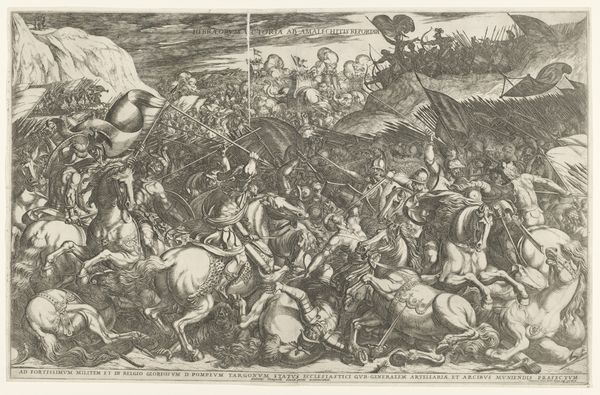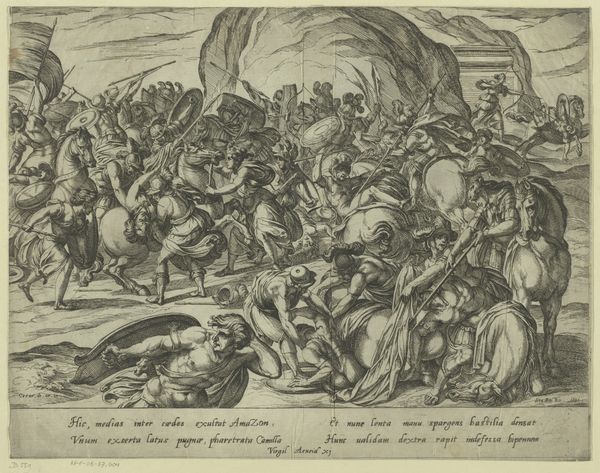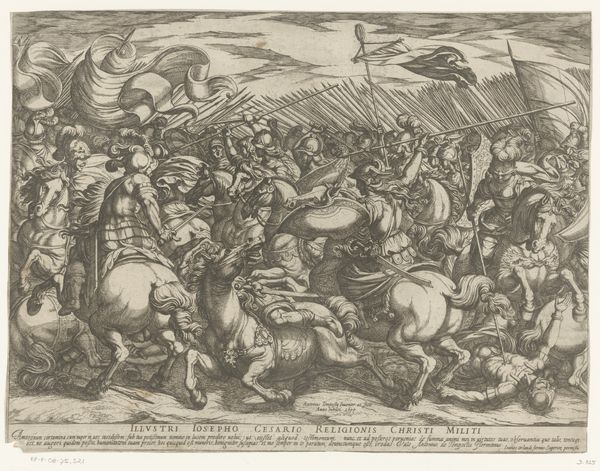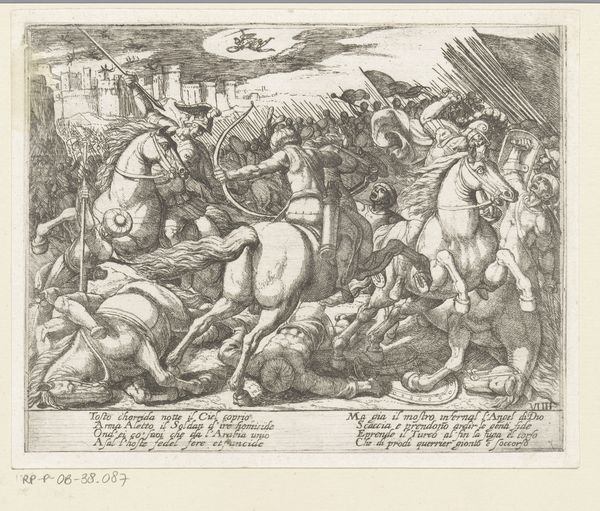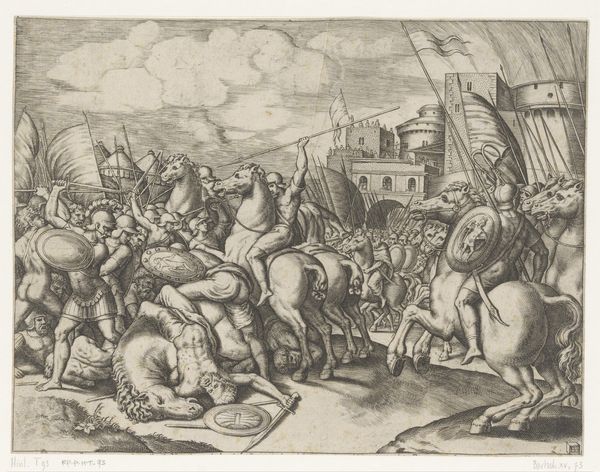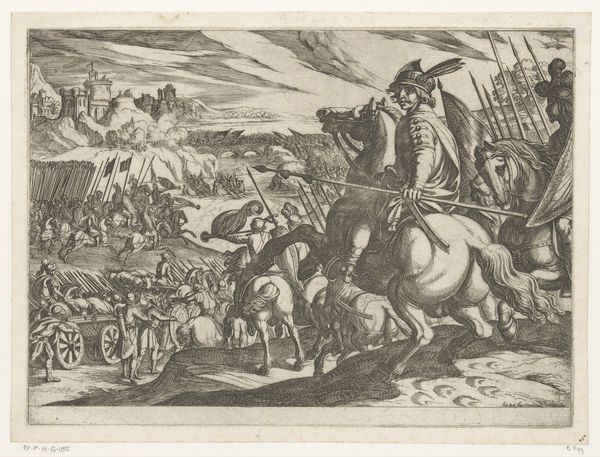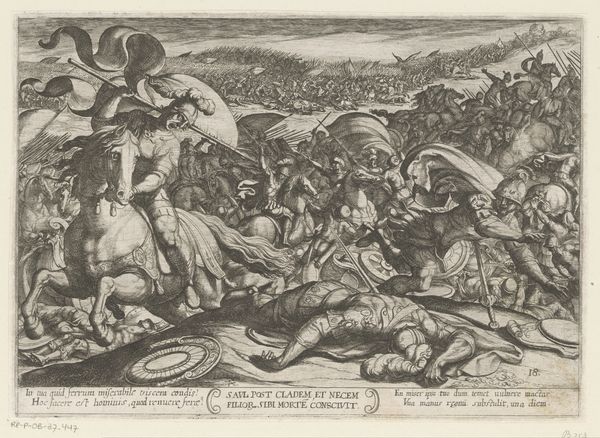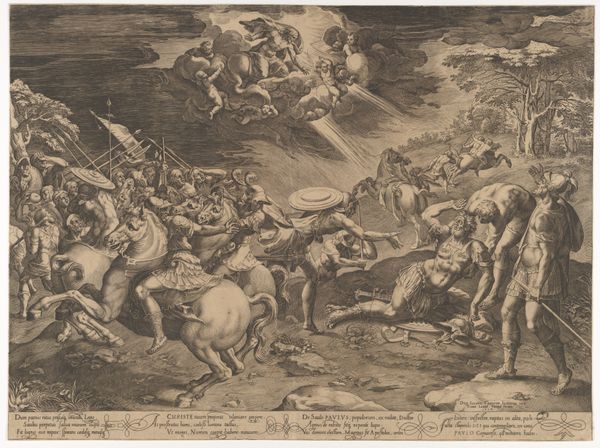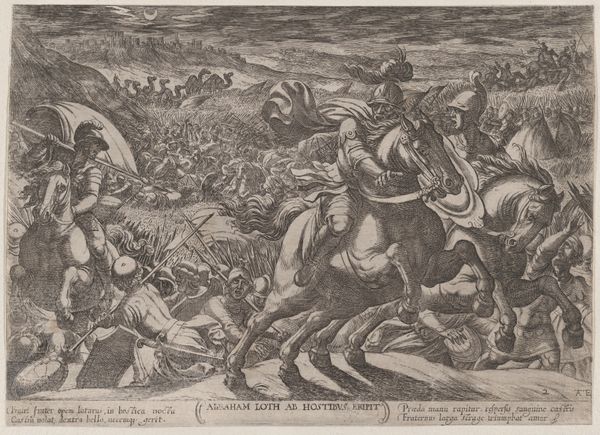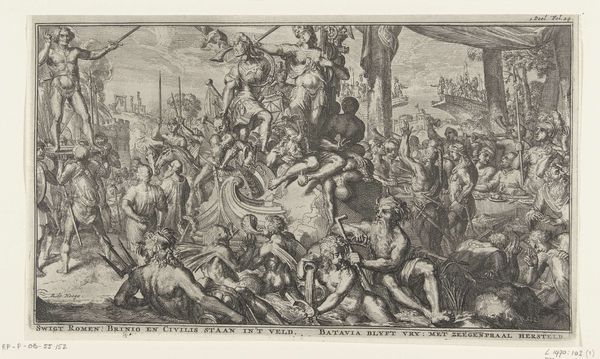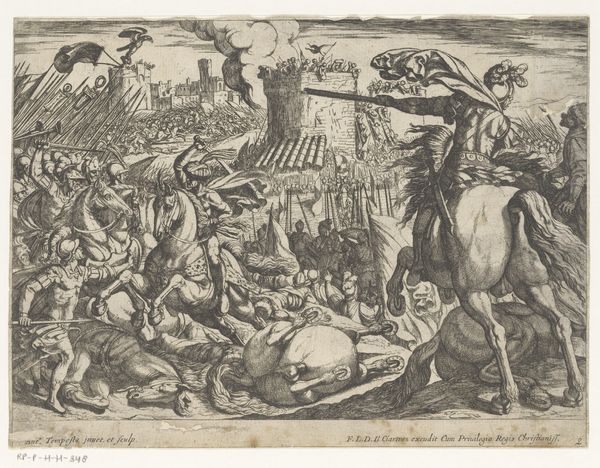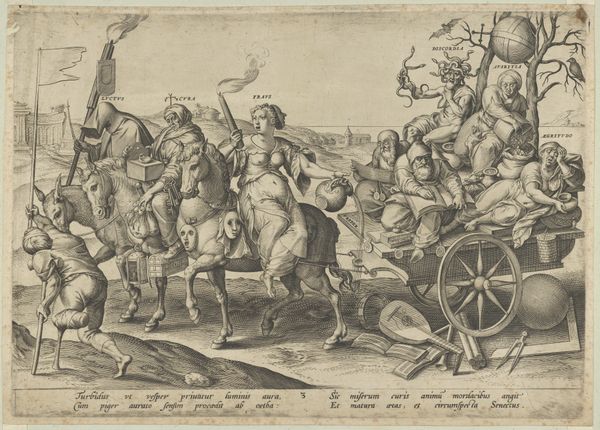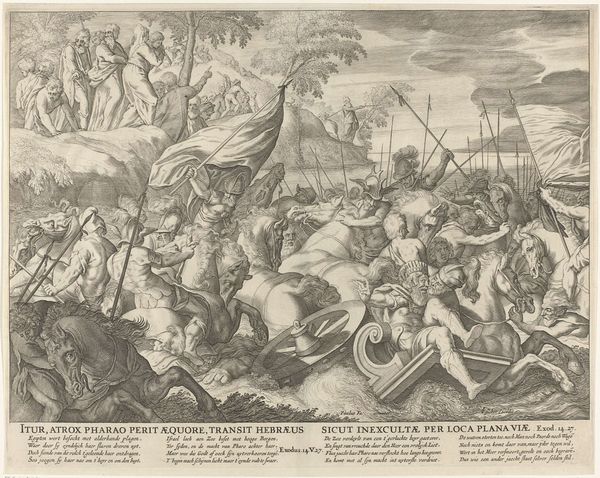
print, ink, engraving
#
narrative-art
#
baroque
# print
#
figuration
#
ink
#
history-painting
#
engraving
Dimensions: height 246 mm, width 324 mm
Copyright: Rijks Museum: Open Domain
Editor: This engraving from 1622 by Matthäus Merian the Elder is called "Alexander the Great defeating the Thracians." The scene is overwhelmingly chaotic. So many figures in motion rendered with such precise lines. What strikes you about the composition, looking at it from a formalist perspective? Curator: Indeed. The overall impression is certainly one of dynamism. Note the strategic use of diagonal lines – the spears, the rearing horses, even the bodies of the fallen. These aren’t simply representational; they actively guide the viewer’s eye, creating a sense of restless energy. The foreground is tightly packed while, curiously, there’s little atmospheric perspective to denote depth, thus flattening the scene. What effect does this have? Editor: I see. The flatness, alongside the very limited tonal range of the engraving, amplifies the visual tension of the interwoven figures. Curator: Precisely. And consider how the figures are delineated. Each is painstakingly described, yet rendered almost identically, which reinforces the overall sense of frenzy. Editor: So, even without knowing the historical context, you can glean meaning from the lines, shapes, and the relationship between them. I initially felt lost in the tumult, but focusing on the composition brings structure to the chaos. Curator: Exactly. One can understand the artwork from solely an analysis of form. And the visual rhetoric of the Baroque period prioritized that drama and movement over clarity.
Comments
No comments
Be the first to comment and join the conversation on the ultimate creative platform.
